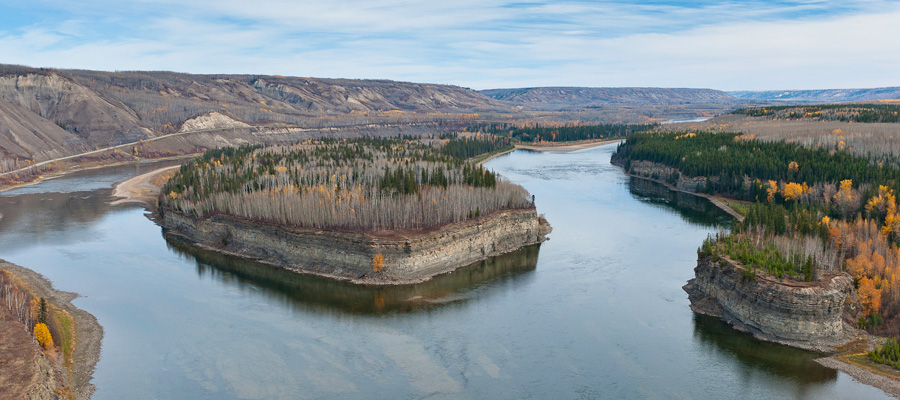Soft rock and a soft touch
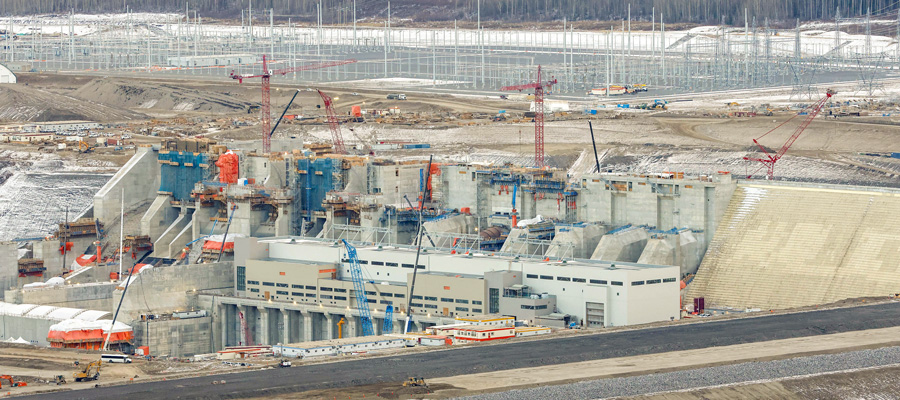
Trove of FOI documents sheds new light on lax regulation of troubled Site C dam
It was the bureaucratic equivalent of waiting for a box of Timbits and a Double-Double at the Tim Hortons’ drive thru.
In the space of just hours on a single day in June 2020, the provincial government office in charge of dam safety rubber stamped a request to embark on a costly fix at the Site C dam construction project.
The fix was needed because the notoriously unstable layers of soft sedimentary shale rock on the Peace River’s south bank had shifted following construction activities that weren’t done in the correct order. And now the shifting of that soft and fickle material had destabilized major components of the dam, including a massive sloped wall consisting of millions of tons of roller-compacted concrete.
Yet the office, which reports to the provincial water comptroller, never publicly disclosed what had gone wrong at the $16-billion-and-counting megaproject that British Columbians will pay for for generations to come.
Details on the swift turnaround by the only government office with the power to effectively halt Site C’s construction because of safety concerns are contained in some of more than 8,000 pages of documents that the provincial government was compelled to release in response to a formal Freedom of Information request by the Canadian Centre for Policy Alternatives.
The documents show that on June 26, 2020, the provincial water comptroller’s office received an 18-page report from Tim Little, Site C’s “independent engineer.” Little’s job was to feed information on Site C from BC Hydro, the publicly owned hydro utility spearheading the project, to the provincial government office in charge of dam safety.
Shifting of that soft and fickle material had destabilized major components of the dam.
It was then that office’s job to review Little’s submissions, weigh the consequences and decide whether or not to issue BC Hydro with permits known as Leaves to Construct that would allow it to advance the project to each new phase of construction, or to order course corrections. Without those permits, BC Hydro would not be able to proceed.
Little’s report was a bombshell. It flagged that bedding planes between the layers of soft sedimentary shale had weakened causing tiny, but troublesome ground movements.
Worse, this had happened after millions of tons of roller-compacted concrete (RCC) had already been placed to make a huge, sloped wall known as a buttress, that was the foundation for some of Site C’s most critical infrastructure, including its powerhouse, turbines and spillway. Further movement would jeopardize all of that and more.
“Detailed mapping of excavations and monitoring with geotechnical instruments during construction to date have identified that certain bedding planes have lower strengths and are more critical to stability than previously considered in the design,” Little reported to Richard Penner, a professional engineer, who in turn reported to Water Comptroller Ted White.
“The updated interpretation of foundation conditions has led to design revisions for the foundations of the RCC core buttress and the adjacent right [south] bank portion of the earthfill dam,” Little continued.
One and the same
It is hard to overstate the seriousness of what Little had conveyed. The buttress was sitting on top of what could best be described as “soft” or “near” rock, and there was a risk that some of the bedding planes between the layers of shale were weaker than previously thought and could cause more ground movement.
Yet in only a matter of hours, the regulator gave BC Hydro everything it asked for, with nary a hint from the water comptroller’s office that a delay was in order.
All of this is a sad but foreseeable outcome, says US energy economist Robert McCullough who has studied the Site C project in detail, has decades of experience analyzing hydroelectric projects across Canada and who was once an executive at Portland General Electric, a privately owned hydro facility in Portland, Oregon.
Site C is simultaneously a BC Hydro project and a BC government project because as a Crown corporation BC Hydro’s sole shareholder is the Province of British Columbia. Effectively, that means the government is regulating itself at Site C.
“This is an ongoing concern for me—the lack of separation between the reviewer and the entity being reviewed,” McCullough says.
The lines get even blurrier, he suggests, when a key player in the regulatory process has deep ties to both BC Hydro and the Site C project itself.
In this case, Tim Little was a senior engineer at BC Hydro where he worked on various aspects of the Site C project. He then became a consultant to BC Hydro before being nominated by BC Hydro to be Site C’s independent engineer. The BC government then accepted BC Hydro’s nominee, appointing Little to be the critical liaison between BC Hydro and the water comptroller’s office.
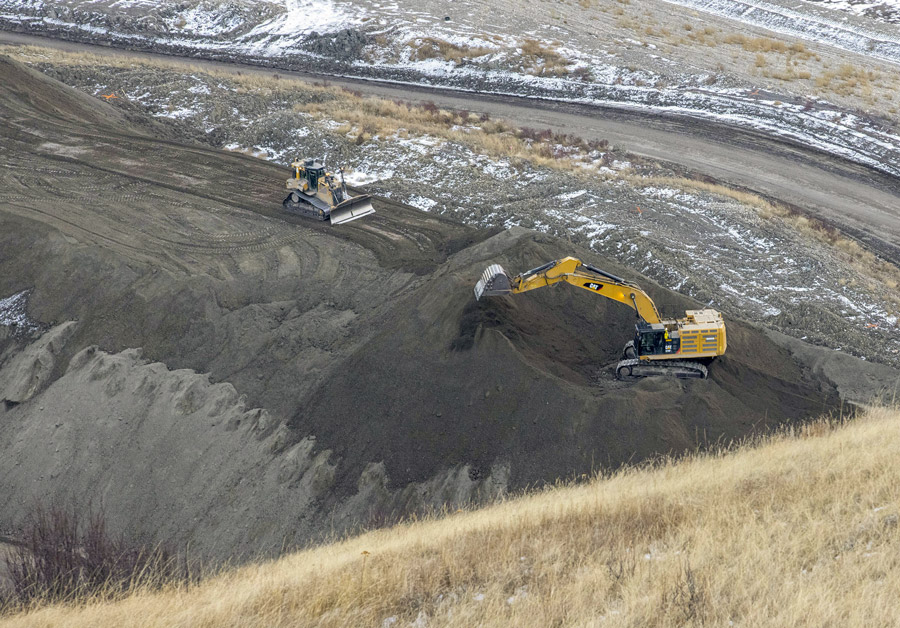
Massive amounts of earth being moved at the Site C project in mid-November 2022. Photo: Don Hoffman.
“Subject to failure”
What made Little’s report even more disturbing was that Site C’s design called for the now unstable buttress to be joined by an as-yet-to-be-built earthen wall.
The shale below the critical corner where the buttress and earthen wall would meet to form a highly unusual L-shape dam, was also weaker than previously thought. It, too, needed “enhancement.”
If ever there was a time to push the pause button, this was it. Yet, in a matter of hours on the very same day that he received Little’s report, engineer Penner granted BC Hydro everything it asked for.
“My decision is to authorize BC Hydro to proceed with Stability Enhancements for RCC Buttress and Earthfill Dam Right [south] Bank as described in the submission,” Penner wrote, adding elsewhere that without the changes the whole thing might come crashing down.
“With the decrease in interpreted shear strength of the underlying bedding planes, the structure is subject to failure,” Penner wrote.
Anchoring three million tonnes of concrete?
The most immediate of the approved changes or enhancements outlined by Little and approved by Penner, called for BC Hydro to sink 162 steel bars or rods in front of the buttress, where just shy of three million tonnes of concrete was in place.
The reinforcing bars were intended to anchor all of that mass, preventing it from moving.
“The selected approach is to install foundation anchors extending across bedding planes BP29A and BP30 in the bedrock below the base of the RCC [roller-compacted concrete] buttress. There will be three rows of 54 anchors, each consisting of 75 mm, 20 m long non-tensioned steel bar,” Little said in his June 26 report.
Little did not elaborate further on what would be required to do this. But clearly much work lay ahead.
A total of 162 angled holes would have to be drilled through layers of shale and weak bedding planes, and each hole would need to be 20 metres or more deep to accommodate the steel rods that were each almost as long as the height of a five-storey apartment building.
Being prepared?
What made Little’s report even more notable, however, was his use of the future tense. “The selected approach is to install.” “There will be three rows.”
The wording suggested that the proposed fixes were some way off because first they had to be reviewed and approved by officials in the water comptroller’s office.
But clearly that was not the case. We know this because in a subsequent report written by Little on July 20, a photograph shows a pile of the anchor bars that would be used to shore up the vulnerable buttress at Site C. The photograph is dated June 23.
In other words, three days before Little submitted his bombshell report BC Hydro had already invested in the material that would be used for the critical foundation enhancements—a signal that the publicly owned utility felt that no regulatory roadblock would be placed in its way or that it would proceed with the enhancements or without the approval. The cutline accompanying the photograph reads: “Core buttress anchors (975 mm diameter threadbares) being prepared for installation.”
Also revealed in Little’s July 20 report is that “by the end of June” 133 of those 162 holes were already drilled, with 30 of the steel bars already inserted.
Little’s July report also revealed something else: For “several months” he’d been meeting with BC Hydro officials and Site C’s Technical Advisory Board to discuss problems at the construction site, problems only then coming to light as far as the water comptroller’s office knew.
“A project risk”
Less than two weeks after Little’s disclosure that the controversial fix was underway and that he’d been in meetings with BC Hydro for months to discuss problems at the construction project, provincial Energy Minister Bruce Ralston held a news conference on July 31, a Friday heading into the long weekend.
Ralston announced the government had appointed former deputy minister of finance, Peter Milburn, to investigate Site C’s problems and spiralling costs.
Ralston did not address what the water comptroller’s office knew about problems at Site C, when it learned of those problems and what it had done about them.
The news conference coincided with BC Hydro’s voluntary filing of a quarterly report on Site C with the BC Utilities Commission. (Under normal circumstances, the commission would have been the arm’s length overseer of the project—but was removed from that role by the previous Liberal government in 2010, a decision that the current government opted not to reverse.)
In a cover letter accompanying the filing with the commission, BC Hydro’s Chair and CEO, Chris O’Riley, first blamed the project’s skyrocketing costs and delays on COVID-19, but later said:
“ . . . a project risk has materialized on the south bank. Towards the end of December 2019, investigations and analysis of geological mapping and monitoring activities completed during construction identified that some foundation enhancements would be required to increase the stability below the powerhouse, spillway and future dam core areas.”
Ralston did not address what the water comptroller’s office knew about problems at Site C.
“By the end of the March 31 reporting period, we had learned more about these geological challenges. Based on further engineering analysis of the proposed mitigation measures, the foundation costs are anticipated to be more substantial than initially expected in January.”
Neither Ralston nor O’Riley was asked at the time about when BC Hydro had officially alerted the provincial regulator to those problems. But BC Hydro’s filing with the utilities commission indicates that senior executives knew of serious “project risk” issues long before Little filed his June 2020 report—a fact well documented in an investigation by The Narwhal. And Little himself had talked with BC Hydro about those problems for months before officially transmitting news about them to the regulator.
BC Hydro’s most recent report to the utilities commission was in June 2022. It notes that in addition to the 162 steel rods used to stabilize the buttress in 2020, even more reinforcements are now needed to stabilize other critical dam infrastructure. The report flags that another 48 “large diameter concrete-filled vertical steel piles” will need to be placed near the dam’s powerhouse.
The work to place the piles is obviously complex because the report notes the final piles will only be drilled and the steel and concrete placed by spring 2023. The report is mute on how much the latest enhancements will add to Site C’s already bloated $16 billion price tag.
The independent engineer
When BC Hydro nominated Tim Little to be Site C’s independent engineer, the water comptroller’s office quickly deemed him to be an “appropriate and satisfactory” choice for the job.
Little was not, however, independent. At least not by commonly accepted definitions of the word. He had worked for years as a BC Hydro engineer before moving on to form a consulting company, with BC Hydro as its main client.
According to BC Hydro financial statements, T.E. Little Consulting Inc. received more than $2 million in the past 10 years, with the bulk of that money covering Little’s services as Site C’s independent engineer.
By accepting Little’s nomination, the water comptroller’s office was knowingly basing its decisions on the advice of someone who not only had deep ties to BC Hydro, but who was personally and professionally invested in the Site C project.
Which comes as no surprise to McCullough.
“It would be very unusual that a decision-maker would appoint an advisor who is likely to oppose his project,” McCullough says, when what you really need is someone who is there to provide a firm check and balance.
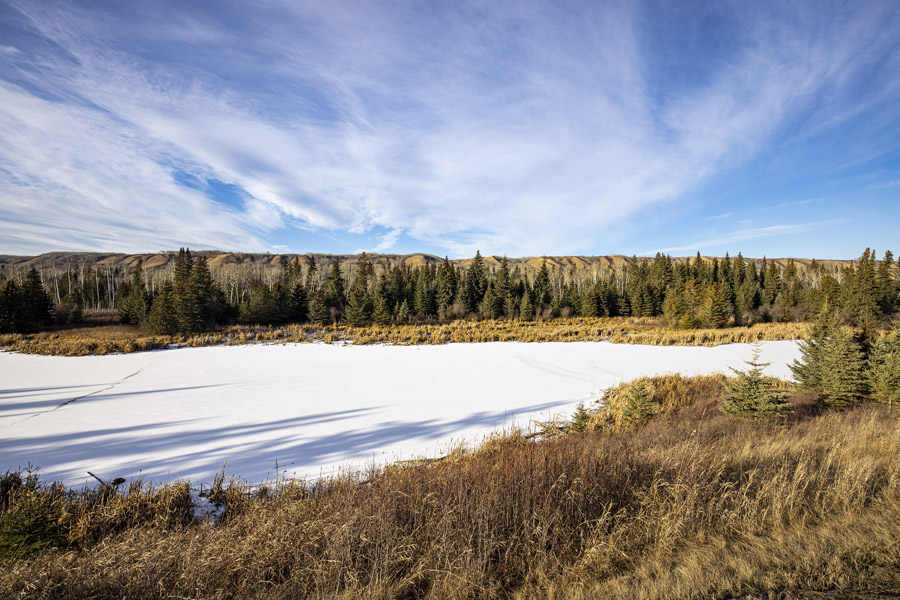
Watson Slough, a wetland and refuge for endangered birds such as the Yellow Rail and Horned Grebe, will be flooded by the Site C reservoir. Photo: Don Hoffman.
A wow statement
Ever since the massive W.A.C. Bennett and Peace Canyon dams commenced operations (in 1968 and 1980 respectively), BC Hydro had always planned to build other dams on the Peace River.
But while Site C was on BC Hydro’s drawing books for decades, getting the third dam built was another matter.
In 1991, Little, then a BC Hydro employee, was one of two authors of a peer-reviewed paper in the Canadian Geotechnical Journal that discussed the “rebound potential” of “soft rocks” or “near rocks” at Site C.
That soft or near rock was shale; the dominant geological feature at Site C. Such “soft rock,” can move in a process called “rebounding” after large excavations occur.
Little and co-author Alfred Hannah (then an engineer with Klohn-Crippen, a company that subsequently became involved in Site C’s design) noted this phenomenon saying:
“Nonelastic or time-dependent rebound, otherwise known as heave or swelling, is a well-known phenomenon associated with certain soils and rocks, predominantly clay based, that are sensitive to moisture. In the case of soft rocks, or ‘near rocks,’ clay shales and shales are most likely to exhibit swelling characteristics. The swelling of shales can be initiated in response to unloading by erosion or excavation, and (or) by exposure to water.”
In plain language what Little and Hannah said was that shale, which is not really a rock at all, is a temperamental material. Dig around it, expose it to water, and watch out. As political commentator and satirist John Oliver would say, that is a “wow” statement if ever there was one. Because if you’re building a dam two things are certain: You’ll do a lot of digging and you’ll encounter a lot of water—for the lifetime of the project.
Going to L
Little, Hannah and many others knew decades ago that the presence of so much shale at Site C posed daunting engineering challenges, particularly on the south riverbank with its preponderance of shale and weak bedding planes.
In fact, as far back as the 1980s when BC Hydro had first thought about proceeding with the project, it had approached Portland General Electric to be a minority partner, McCullough says, adding: “We passed, simply because of the costs and the engineering uncertainties.”
It was those uncertainties that eventually led Site C’s architects to toss out the original and more conventional dam design, which cut across the Peace River valley in a more or less straight line.
To avoid anchoring the dam to that fickle riverbank, BC Hydro opted for a radical redesign. What went in straight came out twisted into a dramatic L-shaped structure featuring a massive concrete wall or buttress that paralleled the riverbank from west to east and an earthen dam that cut across the river valley from north to south to join the concrete edifice at a sharp right angle.
All of this was explained in a paper written by six professional engineers who either worked for BC Hydro or for two major engineering firms—SNC Lavalin and Klohn Krippen—who were part of the design team. The paper was presented at the Canadian Dam Association conference in Halifax, Nova Scotia in October 2016 a little over a year after work commenced at Site C. The authors noted at least six problematic bedding planes on the south riverbank.
The new L-shape dam was intended to liberate the structure from all that weak so-called rock. As BC Hydro Engineer Andrew Watson, one of the authors of the paper, later explained to a reporter with Alaska Highway News: “The new design will minimize the depth of the excavation required under the generating station, which will reduce concerns about foundation stability.”
We now know this wasn’t the case. The massive wall of concrete constructed parallel to the problematic riverbank quickly became embroiled in its own stability problems.
Milestone or Millstone?
Notable problems that have delayed scheduled construction and hyperinflated Site C costs include a 400-metre-long tension crack on the excavated north riverbank that necessitated the removal of hundreds of thousands of additional tons of earth, problems completing the drilling of diversion tunnels, which led to delays in diverting the Peace River around the construction site, and dangerous build-ups of dust and falling slabs of concrete in a drainage tunnel.
But one thing that BC Hydro contractors did get done well ahead of schedule was to pour all of the concrete to make the buttress that subsequently became at risk of failing.
On November 1, 2019, BC Hydro boasted in a news release that another 585,516 cubic metres of roller-compacted concrete had been placed that year. The “major milestone” was achieved “seven months ahead of schedule,” bringing the total volume of concrete poured at the site to more than 1.21 million cubic metres, which BC Hydro noted was six times more concrete than was used to build the world’s tallest building.
What BC Hydro did not say in that news release is that roller-compacted concrete has its drawbacks.
Unlike conventional concrete, which is wetter and poured into forms that hold it in place until it hardens, RCC is a drier mix that is placed with asphalt pavers and then compacted by vibrating rollers.
RCC’s great advantage is that it can be laid down quickly, without joints, forms or steel reinforcing, all of which increase costs. It is also strong and durable. If done right, that is.
But on the website Civil Jungle, which presents information on a range of products used in civil engineered projects, there are warnings about RCC’s downsides. “Water seepage” can be a major problem, necessitating the drilling of drainage infrastructure before the concrete is laid. The other thing to avoid is placing RCC over top of “foundation rock” that is of “poor quality,” which any engineer with a passing familiarity of the Peace River valley will tell you abounds at Site C.
BC Hydro did not say that roller-compacted concrete has its drawbacks.
What BC Hydro also didn’t say as it boasted about its great concrete pour, was that some of that concrete was placed well before its own construction plans initially called for. We know this thanks to other documents filed with the water comptroller’s office by Little.
On June 2, 2017, Little told the water comptroller’s office that Peace River Hydro Partners, the main civil works contractor for BC Hydro at Site C, had run into a major problem.
A drainage tunnel being drilled on the south bank was far behind schedule, thanks to the build-up of dangerous levels of silica dust in the tunnelway and portions of the tunnel’s concrete liner crashing to the floor. The original construction plans called for the tunnel to be drilled “in advance” of when the buttress was placed. As Little and Site C engineers knew, water and exposed shale were a bad mix that decades earlier contributed to the collapse in 1957 of the Taylor suspension bridge spanning the Peace River not far downstream from Site C.
But because of the delays in drilling the tunnel, Peace River Hydro Partners had run into a bind. The construction schedule not only called for the tunnel to be done by then, but for the first of the concrete to be poured that summer.
“As Independent Engineer (IE) for the Site C project, I have received a submission from BC Hydro requesting permission to commence construction of the powerhouse buttress, tailrace wall and downstream spillway stilling basin. Those components are the RCC structures scheduled to be constructed in 2017,” Little wrote in his report submitted to Bruce O’Neill, then deputy water comptroller.
Little then recommended that the concrete be poured as per BC Hydro’s request and that in the absence of the drainage tunnel, temporary wells be used to assist in capturing and diverting potentially dangerous and destabilizing water flows.
As would be the case a few years later with Little’s bombshell report on instability issues at the buttress, it took the water comptroller’s office just hours on the same day to issue the requested approval.
The main civil works contractor for BC Hydro at Site C had run into a major problem.
With a stroke of a bureaucratic pen, BC Hydro received permission to flip things on their head.
The concrete would be poured first. The pesky drainage tunnel finished later.
Asked to comment on the water comptroller office’s same-day-approvals, Harry Swain, the long-standing federal public servant, former deputy minister of Industry Canada and chair of the joint review panel of the then-proposed Site C dam, said he was troubled on two counts.
First, the regulator’s decision to allow Little to be Site C’s independent engineer “does not pass the most elementary test of independence,” Swain said.
But it’s what the regulator then did with the reports Little provided to it that raises even more concerns.
“The instantaneous approvals of major construction changes by the water comptroller’s office is inexplicable,” Swain said. “At best, it is possible that extensive consultations between that office and BC Hydro preceded the formal approval of documents. Even then, careful scrutiny of the final texts of these lengthy and technical documents would be expected. At worst, senior government officials may have applied unrecorded pressure on the sole regulator to hasten approvals.”
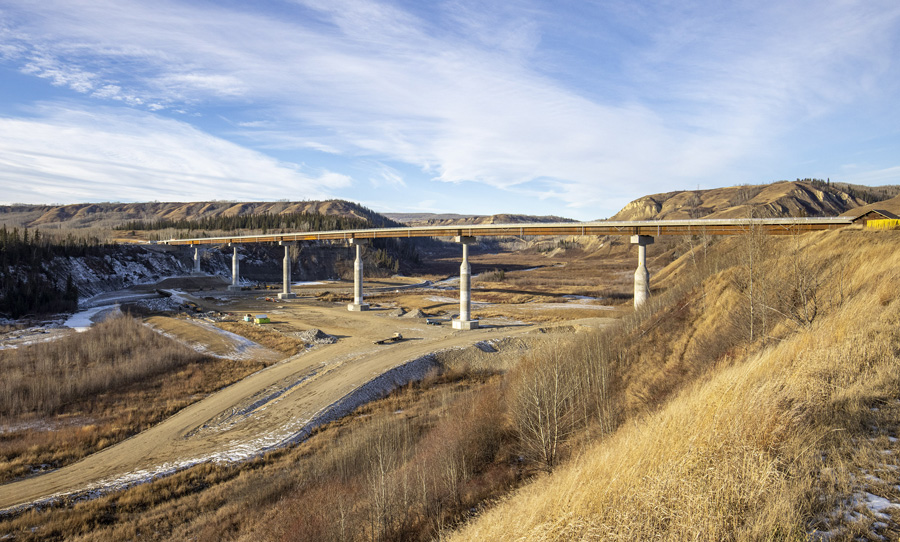
A new bridge across the Cache Creek valley, as seen in November 2022. Part of an extensive highway realignment due to the flooding that will result from Site C. Photo: Don Hoffman.
An inquiry? Don’t count on it
For 44 years, Ken Farquharson was a civil engineer, working on major projects including BC Hydro’s Mica and Keenleyside dams. In an interview he gave in December 2020, eight months before he died, the engineer and committed environmentalist said projects of Site C’s magnitude demanded more rigorous oversight from the one provincial office with authority to ensure safe dam construction.
He warned then that rubber-stamping approvals constituted a failure on the government’s part.
“I do not believe recommendations of this magnitude coming from a proponent should be turned around on a dime by a government engineer,” Farquharson said. “This is not effective consideration.”
Marc Eliesen, a former president and CEO of BC Hydro, adds that as more information comes to light about the “disastrous boondoggle” at Site C, the decision by the Liberal government to exempt the project from independent oversight by the BC Utilities Commission, and the NDP government’s decision to maintain course, looks worse with each passing day.
“The complete lack of provincial regulatory oversight, the escalating construction cost, and the ongoing geotechnical risks to public safety all cry out for an independent Commission of Inquiry into the building of Site C,” Eliesen says.
But it is almost certain that any inquiry will have to wait until Site C is done. Ralston, himself, rejected the idea of an independent inquiry when asked about it during his July 2020 news conference.
By then, it was clear the government was in thrall to the sunk cost fallacy—the idea that too much money had been spent at Site C to walk away, even though walking away may have been the best thing to do given the horrendous expenses and risks that lay ahead.
An inquiry, if and when it ever comes, will be some time down the road, if and when the costly, problem-plagued project is finally done.


